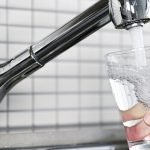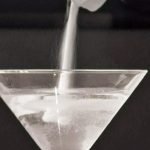While the havoc wrought by the tsunami and resulting nuclear facility breakdown are no longer big news in the Western world, that doesn’t mean that there aren’t still major problems taking place there — locally, in Japan. In fact, the Fukushima Daiichi plant that was so badly damaged is now beleaguered by a tremendous amount of dangerously radioactive water.
The water was purposely pumped into the facility by the Tokyo Power Company (TEPCO) to prevent the reactor cores from overheating after the cooling system was rendered useless. But that was back on March 11th, and they have had to keep on bringing more water in to do the job. Nearly four months later, the volume of water used, coupled with the leaks in the core vessels, has caused flooding throughout the buildings, which is preventing any sort of cleanup at the plant.
Granted, tons of contained radioactive water is still better than the alternative: massive amounts of radioactive material released into the air or ocean. But it still makes clearing out the facility a much tougher job considering that workers aren’t about to go wading through this water no matter what kind of hazmat suit they are given.
Instead, TEPCO brought in specialists to build a water decontamination factory at the nuclear plant. Unfortunately, the plant was only operational briefly in mid-June, as the levels of radiation began to rapidly rise. They were attempting to remove the water in the buildings by pumping it into tanks, then running it through a filtration system, which would separate out the radioactive material. A chemical process is then applied to convert the dissolved elements into solids, which are theoretically much safer to contain and store. But it hit a snag when radiation levels jumped much higher than the experts expected.
The process doesn’t completely remove every trace of radioactivity from the water, but it is nevertheless considered safe after treatment — at least as defined by the authorities…as expediency requires. If the cleanup can get underway again, the newly “clean” water will be rerouted through the plant to continue acting as a coolant for the cores. But since the water will no longer be a danger, theoretically, workers will be able to start making desperately needed repairs to the reactors, including patching up the reactor vessels that are leaking water.
This method has been successful before. The Three Mile Island nuclear reactor in Pennsylvania, damaged back in 1979, was contained using water as a protective shield for the radiation. It provided the workers there with the protection they required to safely remove the radioactive material still in the vessels. This will hopefully prime the way for the same kind of safe shut-down for Fukushima Daiichi and relief for all those who live nearby.
In fact, the current disaster is now ranked equivalent to the Three Mile Island incident at a Level 5 alert. Officially, there were no recorded deaths from Three Mile Island. Also “officially,” a 13-year comprehensive evaluation of 32,000 people living in the area found no adverse health effects or links to cancer as a result of the incident. Unofficially, there were reports of increased skin diseases and tumors and 2,400 families filed a class action lawsuit for “death and disease” claimed as a result of the incident. The bottom line is that the only previous Level 5 incident generated somewhere between zero and 2,400 deaths, all local to the event. Then again, it’s probably worth mentioning that back in April, Fukushima was actually rated at Level 7 — making it equivalent to Chernobyl.1 And at Chernobyl, the difference between the official death toll (currently less than 100, but expected to reach as high as 4,000)2 and the unofficial death toll (between 250,000 and 1,000,000)3 reaches the level of jaw-dropping.
It is hoped that the cleanup in Japan can resume again shortly, keeping its citizens relatively safe from residual problems. In the meantime, all of us should have a written disaster preparedness plan for our families — and not just for nuclear disaster. Plans for what happens during and after earthquakes, floods, tornados, monsoons, major flu epidemics, plague, or a terrorist event in your hometown. Where does everyone meet? How do they get there? Do you have emergency supplies of water, food, batteries, first aid, lanterns, AM/FM/shortwave radios, and emergency shelter and blankets to get you over the hump just in case? It should consist of supplies to cover a minimum of three to seven days.
The sad truth is it often takes a disaster such as the one in Japan to make any of us think about how we would survive a similar situation. Focus on getting your act together and preparing your own family to handle the unthinkable just in case it ever happens to you.
1 Unknown. “Fukushima moved to Level 7.” 12 April 2011. World Nuclear News. Accessed 1 July 2011. http://www.world-nuclear-news.org/RS_Fukushima_moved_to_Level_7_1204111.html
2 Unknown. “Death toll from Chernobyl was over-estimated: report.” 5 September 2005. The Times. Accessed 1 July 2011. http://www.timesonline.co.uk/tol/news/world/europe/article563041.ece
3 Unknown. “Chernobyl Radiation Killed Nearly One Million People: New Book.” 26 April 2010. Environment News Service. Accessed 1 July 2011. <http://www.ens-newswire.com/ens/apr2010/2010-04-26-01.html>












Helping to more users by
Helping to more users by providing the whole process of filtering the water in the blog. All the steps can be conducted in to proper manners in to the blog…..Thanks for this…